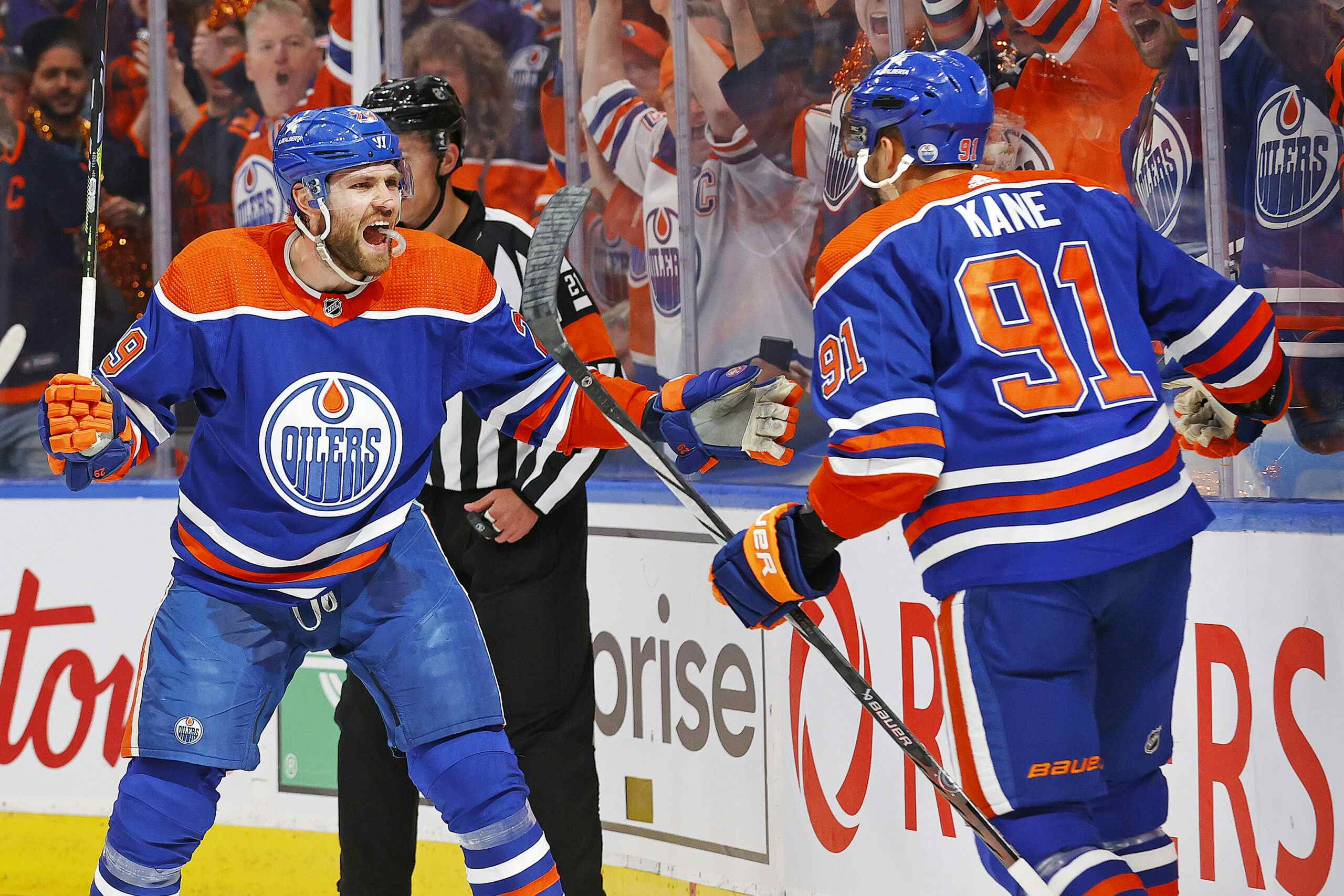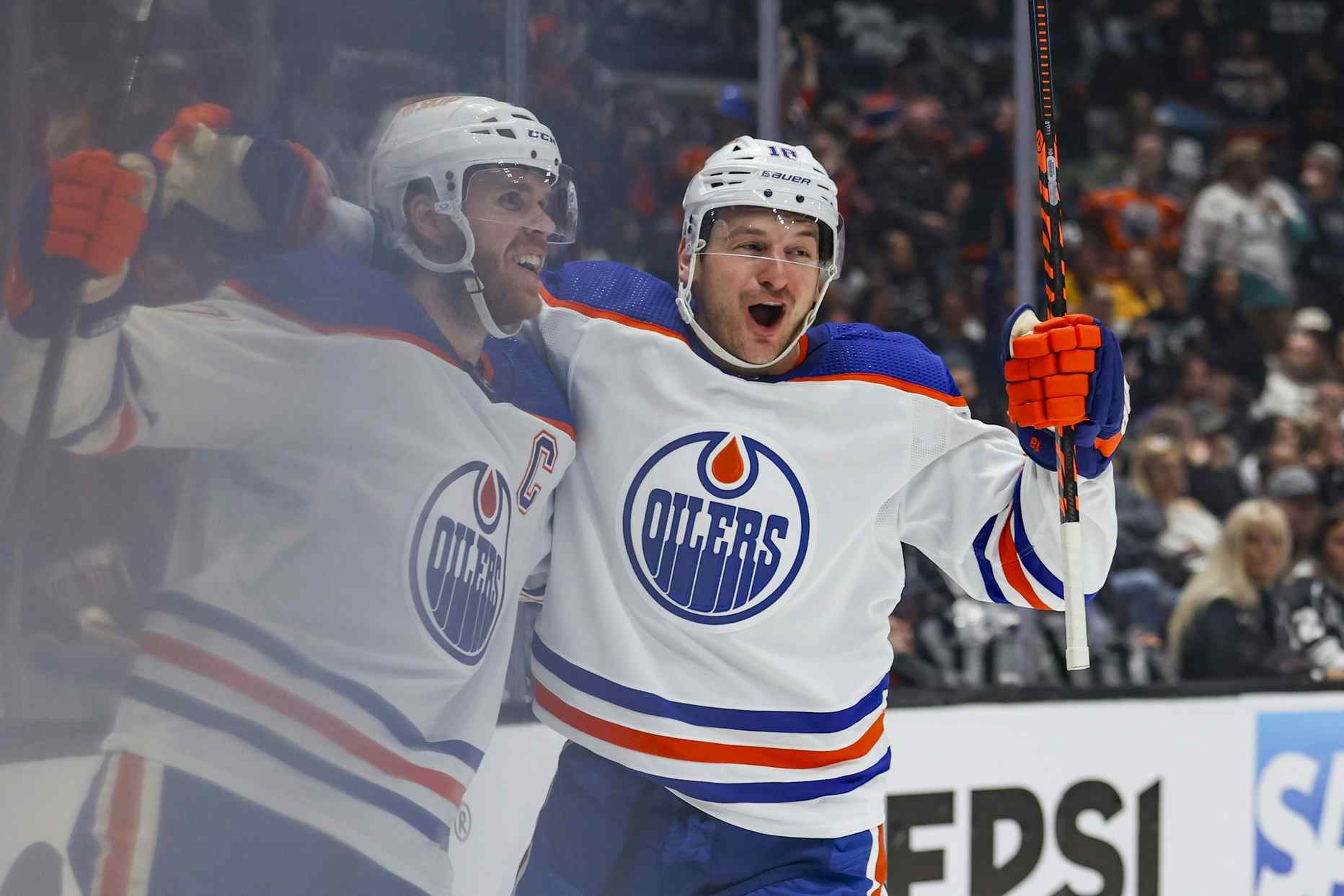Taking Advantage of Other Team’s Expansion Problems

Earlier this week, I wrote about
how the expansion draft may offer the Edmonton Oilers an opportunity to shed a
contract. The club’s somewhat unique positioning offers it a chance to do something
else, though, too: Acquire a player from a team that will have trouble
protecting all its forwards.
how the expansion draft may offer the Edmonton Oilers an opportunity to shed a
contract. The club’s somewhat unique positioning offers it a chance to do something
else, though, too: Acquire a player from a team that will have trouble
protecting all its forwards.
Edmonton’s Situation

The situation will change if the Oilers extend Kris Russell prior
to expansion and decide to shield him, but until and unless that happens there
are two likely protection setups for Edmonton:
to expansion and decide to shield him, but until and unless that happens there
are two likely protection setups for Edmonton:
- 7 forwards, 3 defencemen, 1 goalie: Milan Lucic, Jordan
Eberle, Ryan Nugent-Hopkins, Leon Draisaitl, Patrick Maroon, Mark Letestu, Zack
Kassian, Andrej Sekera, Oscar Klefbom, Adam Larsson and Cam Talbot - 8 skaters, 1 goalie: Milan Lucic, Jordan Eberle, Ryan
Nugent-Hopkins, Leon Draisaitl, Andrej Sekera, Oscar Klefbom, Adam Larsson,
Brandon Davidson and Cam Talbot
Your mileage may vary, but with Connor McDavid and Darnell
Nurse exempt, Edmonton has the option either to protect defensive depth (Davidson)
or a bunch of forwards that it could afford to expose if it had to (Letestu,
Kassian, even Maroon). The exact names matter less than knowing that
those two general paths are the options.
Nurse exempt, Edmonton has the option either to protect defensive depth (Davidson)
or a bunch of forwards that it could afford to expose if it had to (Letestu,
Kassian, even Maroon). The exact names matter less than knowing that
those two general paths are the options.
The thing is that if the team is willing to risk Davidson
(perhaps making a side deal to keep him safe, as suggested earlier this week)
there are a bunch of extra protected slots that it could use for forwards. Lots
of teams don’t have that luxury. That creates opportunity.
(perhaps making a side deal to keep him safe, as suggested earlier this week)
there are a bunch of extra protected slots that it could use for forwards. Lots
of teams don’t have that luxury. That creates opportunity.
Teams With Problems
Matt Henderson wrote
about adding a player last week—citing the above Bob Stauffer tweet—and
came to the same conclusion: there’s room to add a forward, but not a defenceman.
What I want to do is take the same process and apply it to NHL teams to figure
out which clubs will be looking to clear out a forward lest they lose him for
nothing to Las Vegas.
about adding a player last week—citing the above Bob Stauffer tweet—and
came to the same conclusion: there’s room to add a forward, but not a defenceman.
What I want to do is take the same process and apply it to NHL teams to figure
out which clubs will be looking to clear out a forward lest they lose him for
nothing to Las Vegas.
Here’s the list I ended up with:
- Anaheim: The
Ducks are in a terrible spot, mostly because of their blue line depth. Even if
the team buys out Kevin Bieksa (or convinces him to waive his no-move clause)
it’s going to be tough not to take an eight skaters approach. That leaves the
team forced to choose between exposing one of Rickard Rakell or Jakob
Silfverberg. Silfverberg is a tremendous player—only 26, a right shot, with
good size, defensive instincts and scoring ability. He has a very reasonable
$3.75 million cap hit for two more seasons. - Detroit: The Red
Wings are having a tough year, but they still have the kind of forward depth
that will be interesting to Las Vegas. The problem is that most of them are
left shots, and the righties aren’t likely to be dealt. - Minnesota: We’ll
see what happens with Jason Pominville, who the Wild must be desperate to clear
off the roster. If they can’t, his NMC will take up a spot and force a tough
decision somewhere else. The trouble from an Oilers standpoint is that it isn’t
likely to be a right shot who comes free—it’s more likely to be a lefty in the Nino
Niederreiter/Jason Zucker/Erik Haula class. - Nashville: Viktor
Arvidsson’s strong play makes a difficult choice even tougher. Nashville will
be hard-pressed not to go the eight skaters route, which will open up a ton of
good forwards to possible claim or trade. Craig Smith and Calle Jarnkrok, both
right shots, are particularly interesting from Edmonton’s perspective. - NY Islanders: One
imagines the Isles protecting Ryan Pulock, and if so they have to take the
eight skaters route. That would open up a bunch of forwards, with the most
notable possibility from an Oilers viewpoint being Ryan Strome. The NMC on
Andrew Ladd’s contract is the icing on the cake in terms of how bad that deal
is, because it forces New York to use a slot on him (unless he can be convinced
to waive the clause), - NY Rangers: The
guy I wonder about here is Jesper Fast. It’s hard to see the Rangers finding a
way to protect him, and the right-shooting Swede is a pretty interesting
player. I - Philadelphia: Matt
Read doesn’t seem likely to end up protected. Neither does Dale Weise, though
given the year he’s having it’s hard to muster much enthusiasm for the player. - Tampa Bay: The
Lightning may be the most interesting team on the list in general terms, but
perhaps not for the Oilers. The players on the bubble—Alex Killorn, Vladislav
Namestnikov—are all left shots. - Toronto: Obligatory
mention of Tyler Bozak, a right-shooting centre who had 12 power play goals in
2014-15. - Vancouver: Jannik
Hansen has just one year left on his contract after this one, and it wouldn’t
be a shock if Vancouver opted not to protect him. He’s a solid two-way player.
Anaheim and Nashville stand out on the list above. The Ducks
are in a very tough spot, particularly since they have a narrow window to win with
their older forwards. How they maneuver—and what they do with Silfverberg—will
be very interesting to watch. The Predators don’t have quite the same dilemma,
and could certainly afford to trade Smith or Jarnkrok in down years for those players.
are in a very tough spot, particularly since they have a narrow window to win with
their older forwards. How they maneuver—and what they do with Silfverberg—will
be very interesting to watch. The Predators don’t have quite the same dilemma,
and could certainly afford to trade Smith or Jarnkrok in down years for those players.
The player who would really interest me, outside of
Silfverberg, is Strome. The Islanders are going to have to do some juggling to keep
the best parts of their roster intact, and sacrifices will be made. Strome’s
young, has decent scoring rates and can’t seem to get on the good side of head
coach Jack Capuano—he looks like a player who might be undervalued by the
organization.
Silfverberg, is Strome. The Islanders are going to have to do some juggling to keep
the best parts of their roster intact, and sacrifices will be made. Strome’s
young, has decent scoring rates and can’t seem to get on the good side of head
coach Jack Capuano—he looks like a player who might be undervalued by the
organization.
Recently by Jonathan Willis
Recent articles from Jonathan Willis





